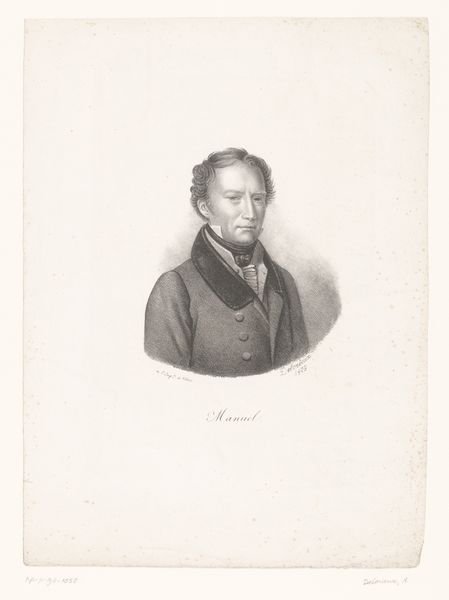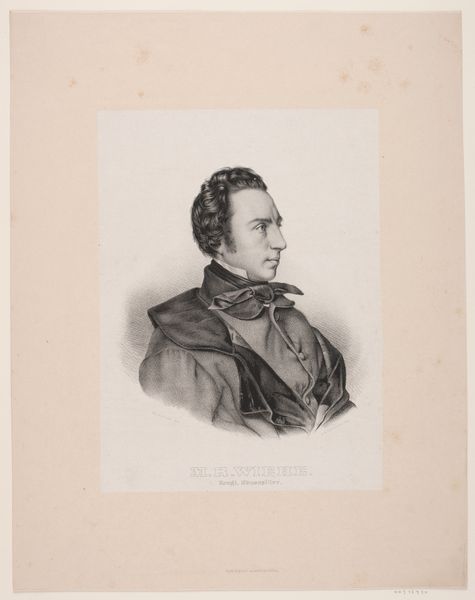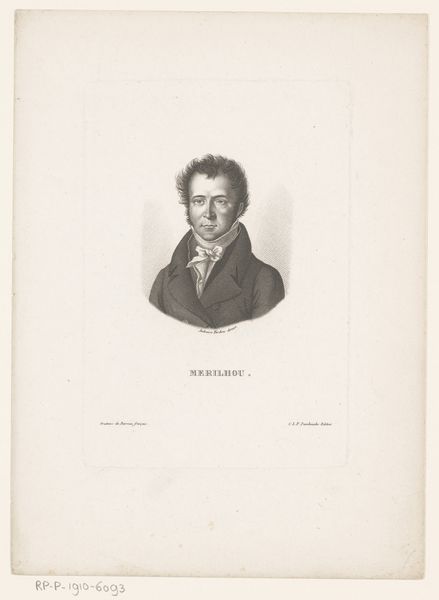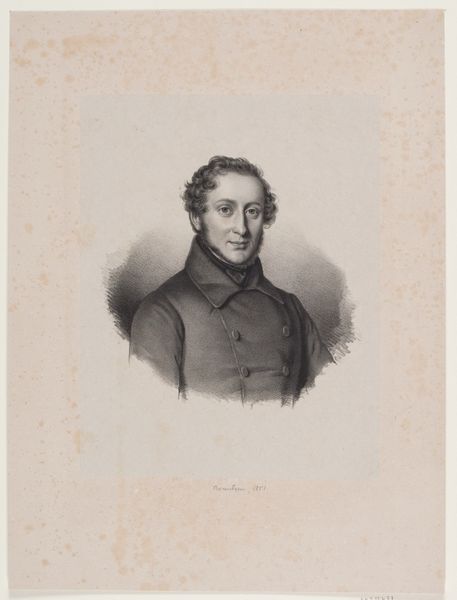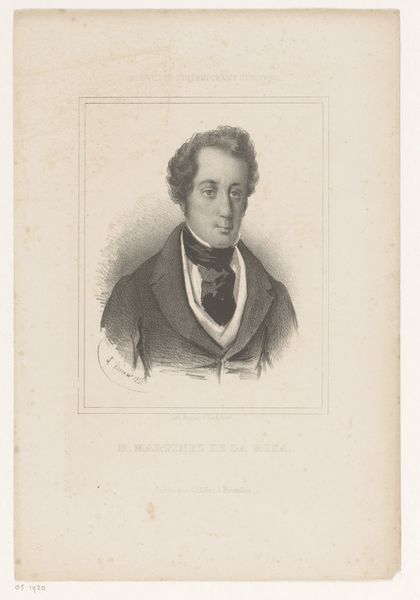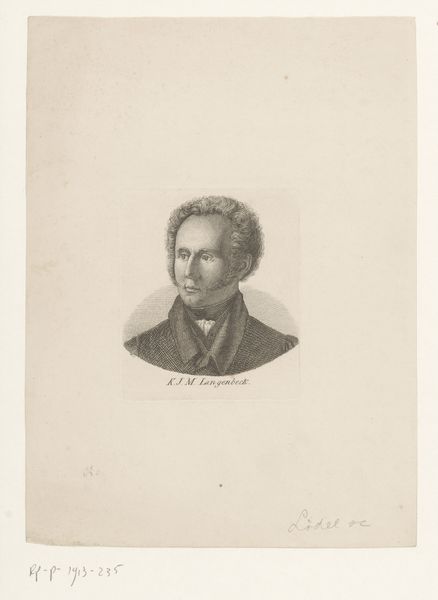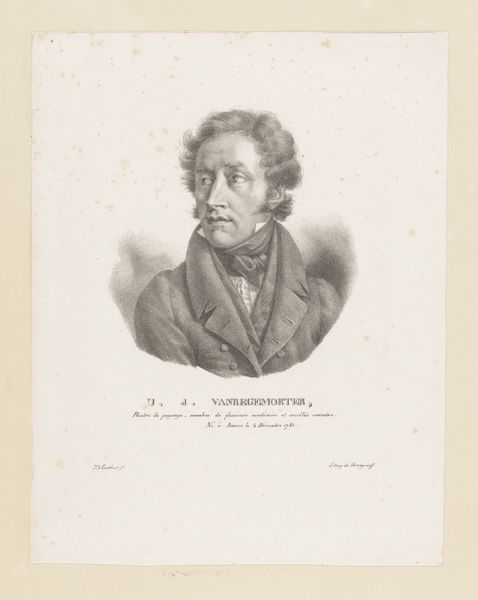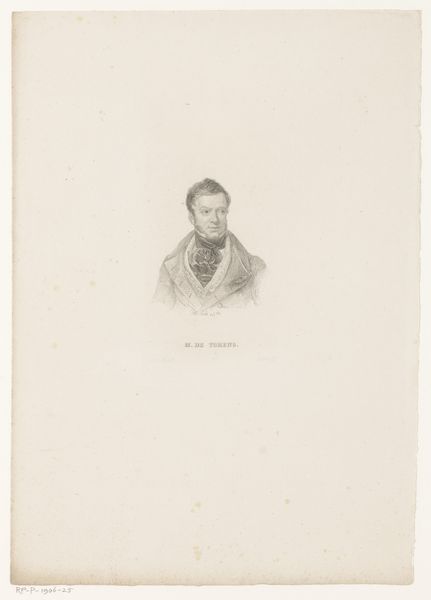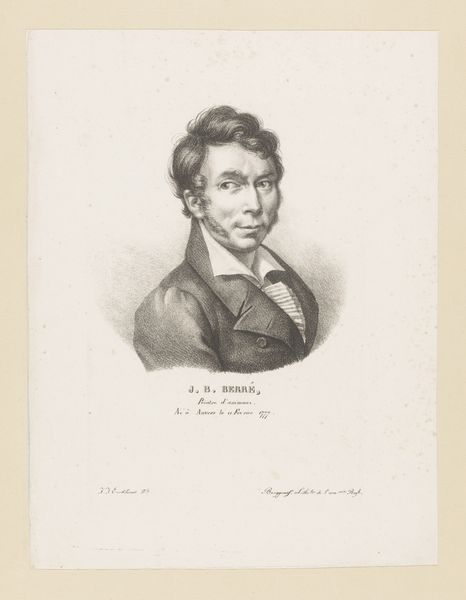
drawing, paper, pencil, graphite
#
portrait
#
drawing
#
figuration
#
paper
#
pencil drawing
#
romanticism
#
pencil
#
graphite
#
portrait drawing
Dimensions: height 235 mm, width 150 mm
Copyright: Rijks Museum: Open Domain
Curator: Here we have a graphite and pencil drawing from between 1822 and 1845; a portrait of Alexander Sergejewitsch Puschkin, attributed to an anonymous artist. It's currently held in the collection of the Rijksmuseum. Editor: It's striking, isn’t it? There's a real immediacy to the line work that suggests a direct engagement with the sitter. I'm interested in the type of paper used, its texture feels almost woven. Curator: Indeed. This was created during the Romantic period. Puschkin, himself, embodied a Romantic ideal. Let’s think about the implications of representing a literary figure in this way. The drawing acts as a form of cultural capital. Puschkin's words, of course, challenged existing structures of power, particularly serfdom and political oppression. His image here also serves as an ideological touchstone, both affirming and solidifying his place in Russian intellectual history. Editor: Considering the timeframe, the access to high-quality paper and graphite would have been limited to certain social strata, reinforcing a social structure within the material itself. The very act of creating this image, of consuming such refined material, signifies privilege and suggests the drawing served the purpose of honoring Pushkin within a specific, probably elite, circle. Was it commissioned? Assembled for mass production later in print form, which looks likely? How were these choices made in that context? Curator: Good questions. And consider, the artist’s anonymity in this case could suggest that the politics surrounding Puschkin’s image were already complicated. Identifying the hand, as it were, might have carried implications for both artist and sitter. In representing Pushkin in this form, were they aligned in any sociopolitical agenda? This brings up important dialogues on the politics of artistic labor. Editor: Precisely. Let's not ignore the labour of paper making in that period either. I find myself pulled back to thinking about the graphite too; the source, refinement, trade networks, and the journey to become a tool wielded to capture an image. These processes echo throughout the drawing, and the act of memorialization, in its particular period. Curator: It’s important to explore how his portrait becomes more than just a representation; it transforms into an assertion of identity within shifting political and social sands. Editor: Ultimately, through this drawing, we're looking at how representation can be formed by, and formative of, socioeconomic and historical processes. It invites you to view all those tensions simultaneously.
Comments
No comments
Be the first to comment and join the conversation on the ultimate creative platform.

